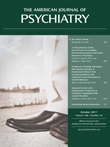Response to Lustman et al. Letter
To the Editor: Although we disagree with the extrapolation of the incidence rates presented by Lustman et al., we agree with the important advice they offer regarding the urgent need for greater vigilance to stop this growing problem. It is not logically possible to apply the 0.2% incidence rate found in Fishbain and colleagues' study (1) to estimate the percentage of new cases of opioid use disorder in people who have no history of substance use disorder. The populations in these studies are entirely different, which precludes using statistics from one to draw conclusions about the other.
The question of what percentage of people who have no history of substance use disorder develop abuse or dependence on opioid painkillers is important. It is a hotly debated topic for which little data exists. The 0.2% rate we cited of opioid abuse or dependence among people with no previous history of substance use disorder was revealed by Fishbain et al. (1) after a meticulous and thorough review and compilation of data from previous studies. We believe this represents the best data available regarding this question. The authors themselves expressed some surprise at the low percentage. They noted that the studies reviewed did not report the opioid dosages to which the patients had been exposed to. They also noted that the lack of widely endorsed and consistently applied operational definitions of opioid abuse or dependence can also skew estimates. In addition, Fishbain and colleagues' analyses revealed that among the chronic pain patients exposed to chronic opioid analgesic therapy who had no history of substance use disorder, 11% displayed aberrant drug-related behavior. It was possible that the 11% of patients found to exhibit aberrant drug-related behaviors may ultimately qualify for a diagnosis of substance use disorder.
We agree that a history of substance use disorder is not the only risk factor for opioid abuse or dependence. We agree with requiring prescribers to monitor patients who receive chronic opioid analgesic therapy with urine drug screens, and we agree with time-limited use of opioids and with efforts to vastly improve communication with patients about opioid risks.
In sum, the treatment recommendations provided in our Treatment in Psychiatry article highlighted the importance of screening for an obvious risk factor (history of substance use disorder) but did not intend to imply that there are not other recognized risk factors. At the same time, we take the position that the data suggest that people with no history of substance use disorders or other current major risk factors may receive chronic opioid analgesic therapy with very little risk of addiction. Many important questions regarding definition and assessment of opioid dependence remain, and history has revealed ill effects of extreme positions regarding opioid use.
1. : What percentage of chronic nonmalignant pain patients exposed to chronic opioid analgesic therapy develop abuse/addiction and/or aberrant drug-related behaviors? a structured evidence-based review. Pain Med 2008; 9:444–459Crossref, Medline, Google Scholar



